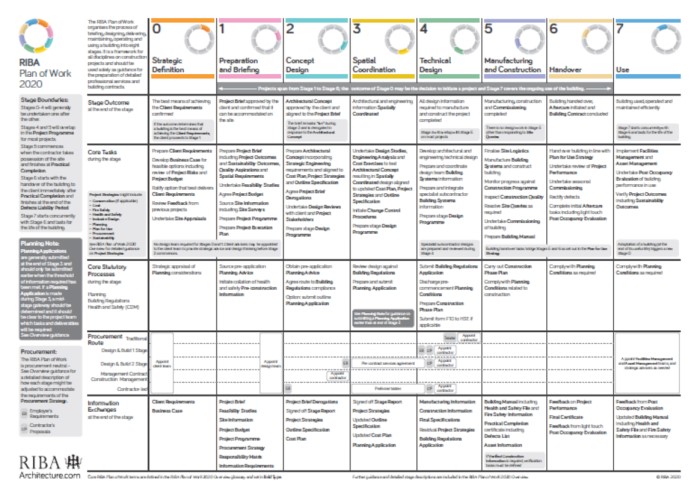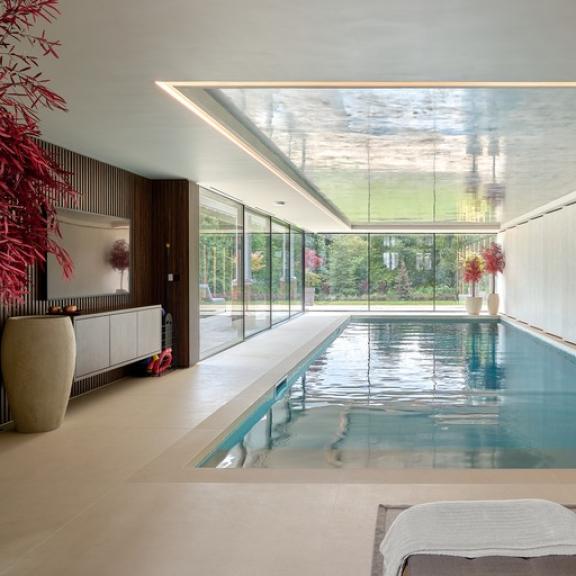RIBA Plan of Work and Interior Designers
We introduce the RIBA Plan of Work and how it can be useful to interior designers.

The RIBA Plan of Work provides an overview of a project from end to end, a valuable insight into the work flow of architects and a useful starting point for any project. Many interior designers will never have been introduced to the RIBA Plan of Work and see this as a tool created for architects. While this is true it can also be an excellent resource for interior designers. The recent collaboration between BIID/RIBA to create new interior design contracts used the RIBA Plan of Work as its foundation. This is just one of the reason that designers should switch to using the new contracts.
The RIBA Plan of Work 2020 was adapted from the previous RIBA Plan of Work following nearly seven years of feedback from the construction industry. It organises the process of briefing, designing, constructing, and operating building projects into eight stages. It clearly explains the stage outcomes, core tasks and information exchanges required at each stage.
- Stage 0 - Strategic Definition
- Stage 1 - Preparation and Briefing
- Stage 2 - Concept Design
- Stage 3 - Spatial Coordination
- Stage 4 - Technical Design
- Stage 5 - Manufacturing and Construction
- Stage 6 - Handover
- Stage 7 - Use
The RIBA Plan of Work 2020 Overview now includes an expanded glossary, comparison to international plan of work equivalents and guidance on the following core project strategies:
- Conservation Strategy
- Cost Strategy
- Fire Safety Strategy
- Health and Safety Strategy
- Inclusive Design Strategy
- Planning Strategy
- Plan for Use Strategy
- Procurement Strategy
- Sustainability Strategy - including detailed tasks aligned to the RIBA Sustainable Outcomes Guide

Visit the RIBA site to download more Plan of Work resources.
Explore new resources from the BIID. Seeing a padlock? Just login or become a member to view.
View the highlights from our 60th anniversary party
We asked Anna Burles: What makes the perfect software?
Discover the smart home technology awards with Platinum Partner, CEDIA
Explore the latest, member-exclusive, templates designed to make your life easier.
University of Gloucestershire wins the BIID Student Design Challenge 2025.





